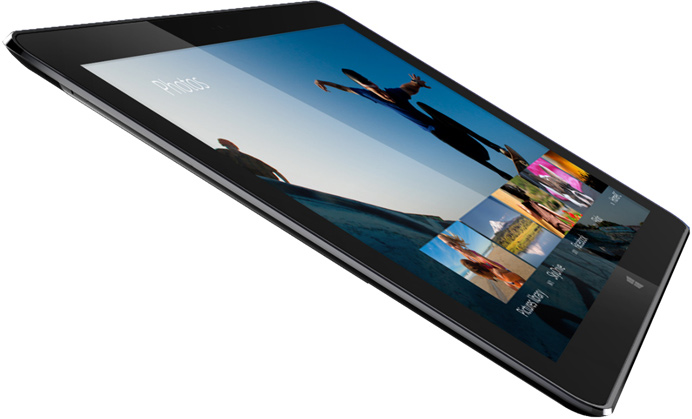At the Computex trade-show in Taipei, Taiwan, Intel Corp. introduced its first microprocessors based on the code-named “Broadwell” micro-architecture aimed at ultra-thin high-performance tablets, notebooks and 2-in-1s. The new central processing units (CPUs) are called the Core M and will emerge on the market later this year. The chipmaker also introduced innovative Core M-based reference designs.
Previously known as the code-named Broadwell-Y, the new Core M chips feature two x86 cores with the Hyper-Threading technology, the Intel HD Graphics core with 24 execution units and various enhancements, 3MB of L3 cache, dual-channel DDR3 memory controller as well as a core-logic placed on the same piece of substrate as the processor. At present Intel does not reveal actual power consumption of the new Core M (BDW-Y 2+2) chips, but it is likely that there will be CPUs with scenario design power of around 4.5W or lower.

At the Computex show Intel also demonstrated two Intel Core M-based reference designs for 2-in-1 systems, code-named “Llama Mountain.” The 12.5” version of the Llama Mountain features 2560*1440 IGZO display (developed by Sharp), when its keyboard is detached, it measures only 7.2mm thin and weighs only 670 grams. The 10” tablet version of the “Llama Mountain” is just 550 grams and a mere 6.8mm thin, which is comparable to the Apple iPad 4.
Intel claims there are three times the volume of new 2-in-1 designs in the pipeline compared with a year ago; 50 per cent of these designs are expected to hit mainstream price points below $700.
The Intel Core M processor will be the first 14nm product on the market market in the second half of this year, Intel said. Earlier this year Intel said that the Core M-based systems would be available by Christmas.
Discuss on our Facebook page, HERE.
KitGuru Says: While we have no doubts that Intel can built an Apple iPad-like tablet or even a 2-in-1 device of a similar size, it remains to be seen whether the “Llama Mountain” design will be actually adopted by commercial products. Usually Intel’s reference designs utilise state-of-the-art components that are pretty expensive or are not in mass production.
 KitGuru KitGuru.net – Tech News | Hardware News | Hardware Reviews | IOS | Mobile | Gaming | Graphics Cards
KitGuru KitGuru.net – Tech News | Hardware News | Hardware Reviews | IOS | Mobile | Gaming | Graphics Cards


